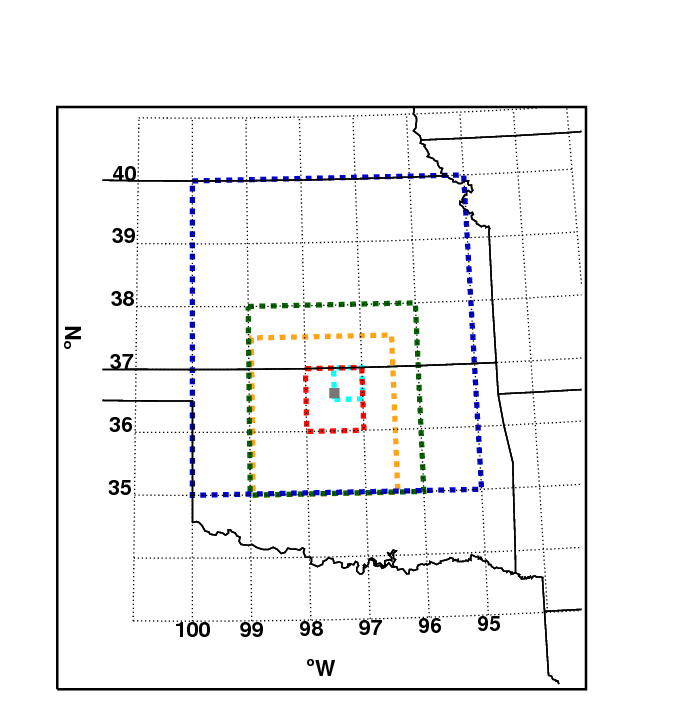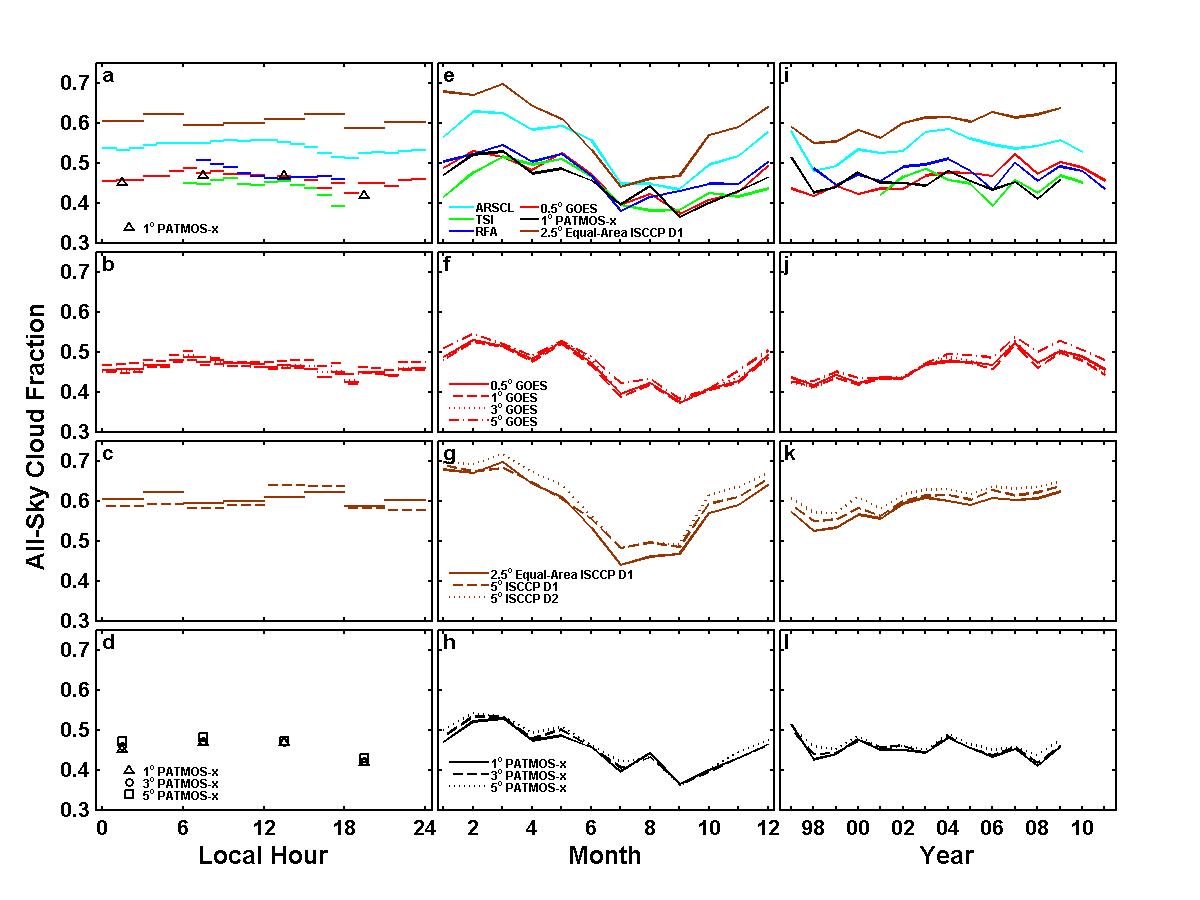Multi-Scale Variations of Decade-Long Cloud Fractions from Six Different Platforms Over the SGP
Submitter:
Wu, Wei — NOAA National Ocean Service
Area of research:
Cloud Distributions/Characterizations
Journal Reference:
Science
For decades, researchers have intensively studied observationally based cloud fraction estimates to better understand current climate change and predict future climate variability. In this study, observationally based cloud fraction estimates from six different platforms (three ground-based estimates and three satellite-based estimates) are compared.
Impact
The comparisons are performed at multiple temporal and spatial scales using data collected at the Southern Great Plains site between 1997 and 2011. The results show that 1997-2011 mean cloud fractions from the Active Remote Sensing of CLouds (ARSCL) and International Satellite Cloud Climatology Project (ISCCP) are significantly larger than estimates derived using the other four methods. Although more high clouds are likely a reason for larger ARSCL cloud fractions, and more low clouds are likely a reason for larger ISCCP cloud fractions, other mechanisms cannot be ruled out and require further investigation. Three estimates (ISCCP, ARSCL, and Geostationary Operational Environmental Satellite [GOES]) exhibited an overall increase of 0.08-0.10 in the annually averaged cloud fractions from 1998 to 2009. However, estimates from the Total Sky Imager (TSI), Radiative Flux Analysis (RFA), and Pathfinder Atmospheres Extended (PATMOS) showed no significant tendency for increased cloudiness during the same time period. Monthly cloud fractions from all the estimates exhibit quasi-Gaussian frequency distributions, while the distributions of daily cloud fractions are found to be dependent on spatial scales. Cloud fractions from all the estimates show much larger seasonal variations than diurnal variations.
Summary
Findings from this study suggest caution when using observationally based cloud fraction estimates for climate studies such as evaluating model performance. The researchers note that whenever any cloud fraction estimate is used, the limits used to differentiate between cloud/cloud-free must be taken into consideration and understood, and they strongly urge the community to include this information along with any cloud fraction estimations provided.



